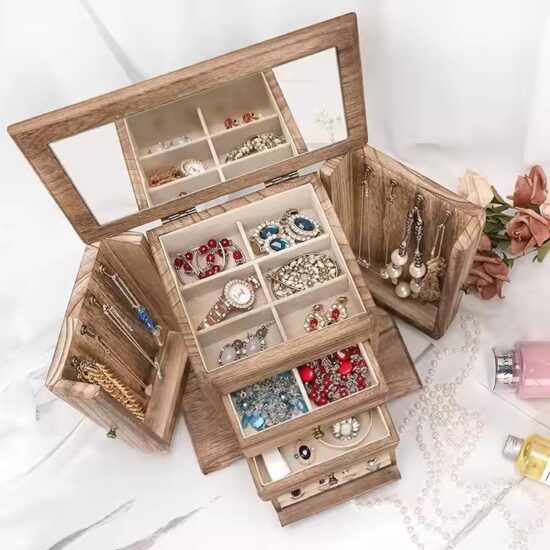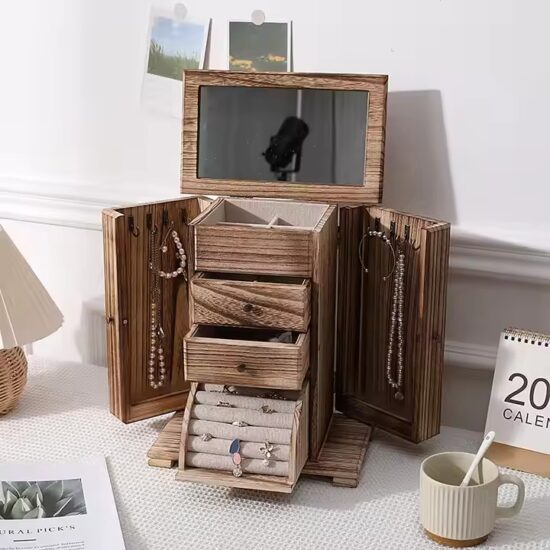jay@nbdho.com
How to Assess the Quality of a Wooden Jewelry Box?
How to Assess the Quality of a Wooden Jewelry Box?
Wooden jewelry boxes are prized for their elegance and durability, but not all wooden boxes are created equal. Whether you are a brand owner, retailer, or consumer, understanding how to assess the quality of a wooden jewelry box is essential to ensure value, longevity, and aesthetic appeal.
Here are the main factors to consider when evaluating the quality of a wooden jewelry box:
1. Material Quality
-
Type of Wood: High-quality boxes use solid hardwoods like walnut, maple, cherry, or mahogany rather than cheaper plywood or MDF. Solid wood offers better durability and a richer look.
-
Sustainability Certifications: FSC or PEFC certifications ensure wood is responsibly sourced.
2. Craftsmanship
-
Joinery and Construction: Look for precise joints (dovetail, finger joints) rather than glued edges. Tight, smooth seams indicate quality craftsmanship.
-
Weight and Feel: A well-made box should feel substantial and balanced, not flimsy or light.
-
Symmetry and Finish: Even surfaces, straight edges, and flawless finishes show attention to detail.
3. Hardware Quality
-
Hinges and Closures: Durable metal hinges (brass or stainless steel) ensure smooth opening and long-term function. Magnetic closures or secure locks enhance usability.
-
Smooth Operation: Hardware should operate quietly and effortlessly without wobble or looseness.
4. Interior Design and Lining
-
Protective Linings: Soft velvet, suede, or satin linings protect jewelry from scratches. Low-quality fabric or poorly glued linings reduce protection.
-
Compartment Layout: Well-designed compartments or inserts prevent tangling and provide organized storage.
5. Surface Finish
-
Type of Finish: Look for smooth, even varnishes, lacquers, or oils that enhance wood grain and protect against scratches and moisture.
-
No Imperfections: Avoid boxes with bubbles, peeling, or uneven color.
6. Functionality and Practicality
-
Secure Closure: Box should close firmly without gaps or rattling.
-
Ease of Use: Hinges should allow smooth access; drawers or lids should open without sticking.
-
Portability: Consider size and weight if the box will be frequently transported.
📦 Conclusion
Assessing the quality of a wooden jewelry box involves careful examination of materials, craftsmanship, hardware, interior design, and finish. Choosing a high-quality box ensures your jewelry stays protected and your brand maintains a premium image.
Investing time in quality assessment helps you select packaging that delivers durability, elegance, and customer satisfaction.





